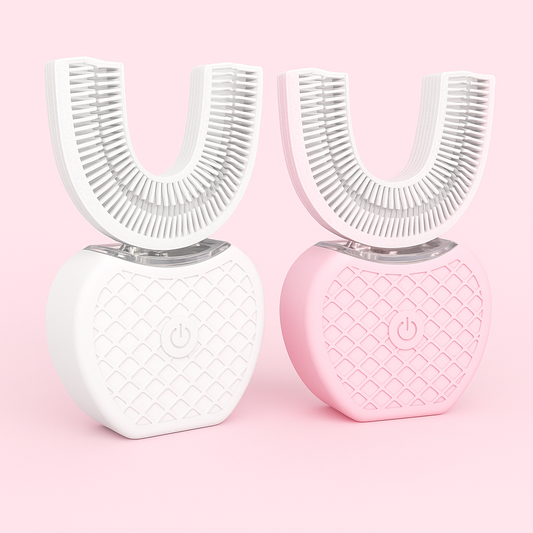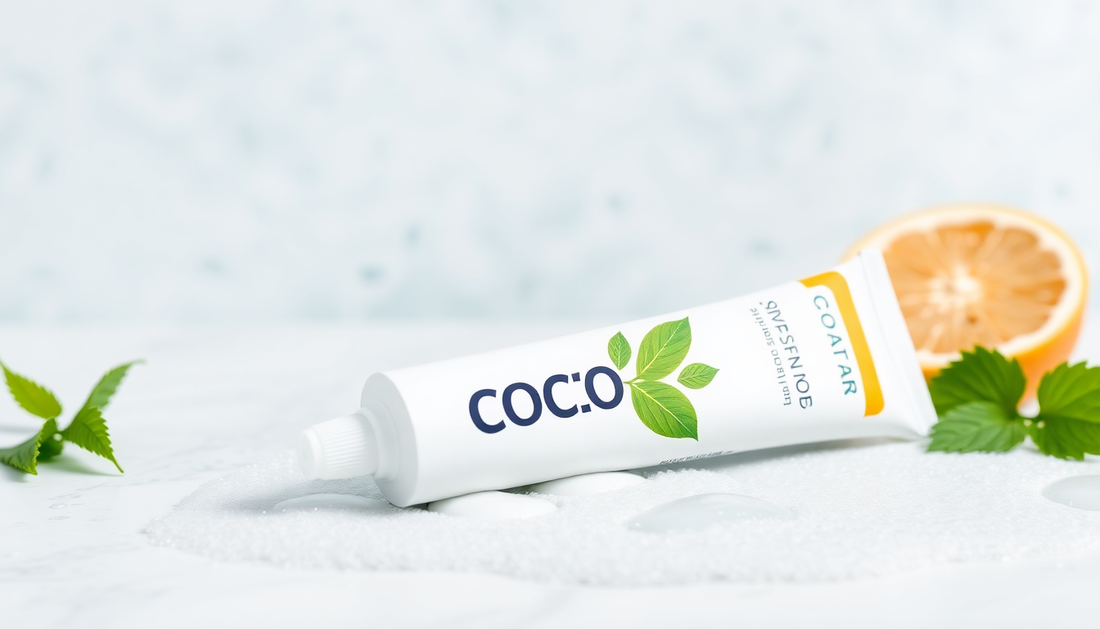Introduction: A New Era in Whitening Toothpaste
More consumers are searching for alternatives to traditional fluoride toothpaste, seeking products that deliver both whitening effects and improved oral health. Keywords like "good whitening toothpaste", "toothpaste without fluoride", "toothpaste with xylitol", and "niacinamide toothpaste" are rising in searches as people look for options that promise brighter smiles without fluoride. This guide is a comprehensive blueprint to help you choose fluoride-free, xylitol- and niacinamide-containing toothpastes that support enamel repair, gum health, and sustained whitening.
What ‘Whitening’ Really Means
Understanding whitening helps set realistic expectations. "Whitening toothpaste" typically works in one of these ways:
- Surface stain removal through mild abrasives and polishing agents.
- Optical brightening with blue covarine-like agents that alter light reflection immediately.
- Chemical stain breakdown using peroxide or enzymes (rare in daily-use fluoride-free pastes).
Most fluoride-free whitening toothpastes focus on stain control and optical brightening while relying on supporting ingredients (like nano-hydroxyapatite or calcium phosphates) to help maintain enamel surface integrity.
Why Choose Fluoride-Free?
- Personal preference: Some people prefer to avoid fluoride for personal or philosophical reasons.
- Alternative remineralizers: Newer technologies like nano-hydroxyapatite are gaining attention as fluoride alternatives for enamel support.
- Sensitive populations: In rare cases where fluoride exposure is controlled for medical reasons, patients may be directed to fluoride-free products.
Note: Fluoride is a well-established remineralizing agent with strong evidence for preventing cavities. If you are at high risk for decay, consult your dentist before switching to a fluoride-free routine.
Key Ingredients and How They Help
When searching for the best toothpaste for whiter teeth that is fluoride-free, focus on effective ingredient combinations rather than single claims. Here’s a deep dive:
Xylitol: The Natural Caries Fighter
- What it is: A sugar alcohol used as a sweetener and oral-health ingredient.
- How it helps: Xylitol inhibits adhesion and acid production of cavity-causing bacteria like Streptococcus mutans, reducing demineralization risk and supporting "health teeth" over time.
- Usage tip: Look for regular xylitol exposure—daily brushing with toothpaste containing xylitol and occasional xylitol chewing gum or mints after meals can be synergistic.
Niacinamide: Soothing Support for Gums and Sensitivity
- What it is: A form of vitamin B3 used widely in skincare and increasingly in oral-care products.
- How it helps: Niacinamide can calm inflammation and support soft-tissue health around the gums, which may reduce bleeding and sensitivity that sometimes accompanies whitening treatments.
- Note: Niacinamide is not a bleaching agent, but healthier gums help your smile look cleaner and brighter.
Remineralizing Alternatives: Nano-Hydroxyapatite & Calcium Phosphates
- How they work: These compounds can deposit mineral back into demineralized enamel surfaces, improving smoothness and strength.
- Why they matter: For consumers avoiding fluoride, nano-hydroxyapatite is one of the most researched alternatives offering measurable remineralization benefits.
Mild Abrasives and Optical Brighteners
- Mild abrasives (silica, calcium carbonate) remove surface stains. Look for low-to-moderate RDA formulas to avoid over-abrading enamel.
- Optical brighteners (blue pigments or covarine-like agents) can deliver immediate visual whitening by changing how light reflects off the tooth surface.
Ingredients to Avoid or Use Cautiously
- Harsh abrasives with high RDA: Can cause long-term enamel wear and sensitivity.
- Strong peroxides in daily pastes: May cause irritation and are usually unnecessary in everyday fluoride-free whitening toothpastes.
- Unproven or irritating additives: Avoid formulations with unnecessary strong flavors, high alcohol content, or ingredients you’ve reacted to in the past.
How to Read Labels Like a Pro
Use this checklist when comparing products online or in-store. For SEO, search terms like "toothpaste with xylitol", "toothpaste that whitens teeth", and "fluoride toothpaste free" will help you find candidate products.
- Ingredient prominence: Xylitol and niacinamide should appear early in the ingredient list if they are key components.
- Remineralizers listed: Nano-hydroxyapatite, calcium phosphate, or CPP-ACP are important if avoiding fluoride.
- Abrasivity (RDA) description: Lower numbers are gentler—look for manufacturer disclosure or independent test claims.
- Clinical claims: Brands that cite human studies, clinical trials, or independent lab data are more transparent.
- Certifications and testing: Even if ADA acceptance often applies to fluoride toothpastes, look for clinical validation or third-party lab testing for fluoride-free lines.
Practical Brushing and Routine Tips
- Brush twice a day for two minutes with a soft-bristled brush and a pea-sized amount of toothpaste.
- Use gentle pressure—too much force increases abrasion and sensitivity.
- Alternate: If a whitening fluoride-free toothpaste has higher abrasivity, alternate it with a low-abrasion maintenance paste to protect enamel over the long term.
- Complementary habits: Daily flossing, xylitol gum after meals, and limiting staining drinks (coffee, tea, red wine) help maintain whitening results.
Special Considerations: Sensitivity, Whitening Treatments, and Children
- Sensitivity: If you experience sensitivity, look for formulations that combine niacinamide with desensitizing agents such as potassium nitrate or arginine (check label before purchase).
- Professional whitening: If you’ve had professional bleaching, choose a gentle fluoride-free toothpaste post-treatment to avoid added irritation; discuss with your dentist first.
- Children: Fluoride-free toothpastes may be recommended in certain situations for very young children to limit fluoride ingestion—follow pediatric guidance.
Common Myths and Misconceptions
- "Non-fluoride equals ineffective" — Not always. Alternatives like nano-hydroxyapatite show promise for remineralization, but fluoride remains the most widely proven agent.
- "Xylitol whitens teeth" — Xylitol lowers decay risk and reduces staining indirectly, but it is not a bleaching agent.
- "Toothpaste treats acne (toothpaste zit)" — Some people use toothpaste on pimples; this is not recommended by dermatologists and unrelated to toothpaste's dental benefits.
How to Compare Products: A Step-by-Step Shopping Guide
- Start with search terms: Use "best toothpaste whitening teeth", "best toothpaste for whiter teeth", "toothpaste for whitening teeth", and "toothpaste without fluoride" to assemble options.
- Shortlist formulas that list xylitol and a remineralizer early in the ingredients.
- Check RDA and any clinical claims or published testing on the brand site.
- Read verified customer reviews focusing on stain reduction over weeks and months (immediate optical effects are different from long-term improvement).
- Try a travel-size first or buy from retailers with good return policies to evaluate sensitivity and results.
DIY and Lifestyle Strategies to Enhance Whitening Results
- Limit staining foods and drinks, or rinse your mouth with water after consuming them; use a straw for dark beverages when possible.
- Use xylitol gum after meals to support oral pH and reduce bacterial acid production.
- Maintain regular professional cleanings—removal of calculus and deep surface stains by a hygienist helps any toothpaste’s whitening effect.
Case Scenarios: Which Toothpaste Is Right for You?
- Low caries risk, looking for brightening: Choose a fluoride-free toothpaste with xylitol, low abrasivity, and optical brighteners.
- Sensitive gums and bleeding: Look for niacinamide toothpaste that emphasizes anti-inflammatory support plus a gentle remineralizer.
- High decay risk: Discuss fluoride options with your dentist; you may combine professional fluoride treatments with a fluoride-free daily paste for other benefits.
Expanded FAQs
-
Q: Is toothpaste without fluoride less effective at preventing cavities?
A: Fluoride remains the most extensively validated preventative agent. However, fluoride-free alternatives such as nano-hydroxyapatite plus xylitol can provide meaningful support for some users; discuss individualized risk with your dental professional. -
Q: How long before I see whitening results?
A: Optical brighteners can show immediate change, while stain reduction and enamel smoothing may take weeks to months depending on diet, hygiene, and initial staining. -
Q: Can I use a whitening toothpaste every day?
A: Yes if it has low-to-moderate abrasivity. If a product is more abrasive, alternate it with a maintenance paste to avoid enamel wear. -
Q: What about "toothpaste with xylitol" vs. xylitol gum?
A: Both help. Toothpaste provides regular exposure during brushing; xylitol gum after meals gives additional antimicrobial action and pH buffering.
Realistic Expectations: What Fluoride-Free Whitening Can and Can’t Do
Fluoride-free whitening toothpastes that contain xylitol and niacinamide can support a healthier oral environment, help reduce staining over time, and improve soft tissue comfort. They are not a substitute for professional whitening when dramatic shade changes are desired. Use them as part of a holistic oral-care routine that includes regular dental visits, proper brushing and flossing, and healthy dietary choices.
Where to Buy and What to Look For Online
When shopping for the best toothpaste whitening teeth or a trusted "toothpaste that whitens teeth" without fluoride, favor brand sites and specialty retailers that publish full ingredient lists, clinical data, and customer feedback. Search terms like "toothpaste whitening best" and "fluoride toothpaste free" will help you compare options. For convenience, consider retailers with clear return policies so you can trial a product risk-free.
Sponsored Recommendation: Try Curated Fluoride-Free Options
If you’re ready to try well-formulated fluoride-free toothpaste that emphasizes whitening, enamel support, and ingredients like xylitol and niacinamide, explore curated selections at Havana Body. Their range highlights products that aim to combine stain reduction with gentle enamel care—ideal for searches like "toothpaste with xylitol" and "best toothpaste for whiter teeth".
Final Checklist: Your Buying Blueprint
- Confirm presence of xylitol and a dedicated remineralizer (nano-hydroxyapatite or calcium phosphate).
- Include niacinamide if gum comfort or reduced irritation is a priority.
- Check RDA and choose low-to-moderate abrasivity for daily use.
- Read verified reviews for stain reduction results over several weeks.
- Consult your dentist if you have high decay risk or recent restorative work.
Conclusion: Build a Smart, Sustainable Routine for a Brighter Smile
Choosing a fluoride-free approach to whitening doesn't mean sacrificing enamel protection or oral health. By prioritizing toothpaste formulations that combine xylitol, niacinamide, and a proven remineralizer—along with low abrasivity and transparent testing—you can support lasting brightness and stronger-looking teeth. Remember that realistic expectations, complementary oral-care habits, and professional guidance are essential components of any whitening strategy.
Ready to explore options and buy fluoride-free whitening toothpaste that focuses on xylitol and niacinamide? Visit Havana Body to browse curated products and choose the toothpaste that best fits your enamel-repair and whitening goals. Your path to healthier, whiter teeth starts with the right formula and consistent care.


